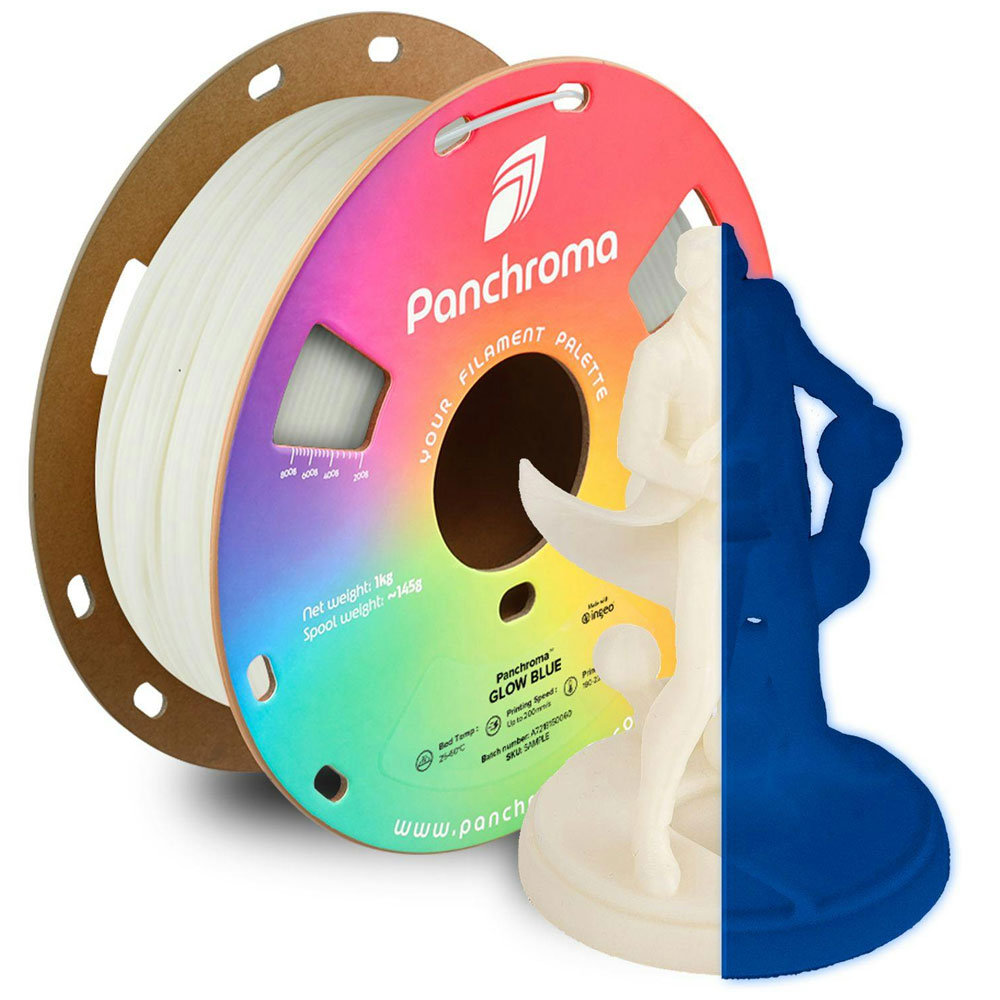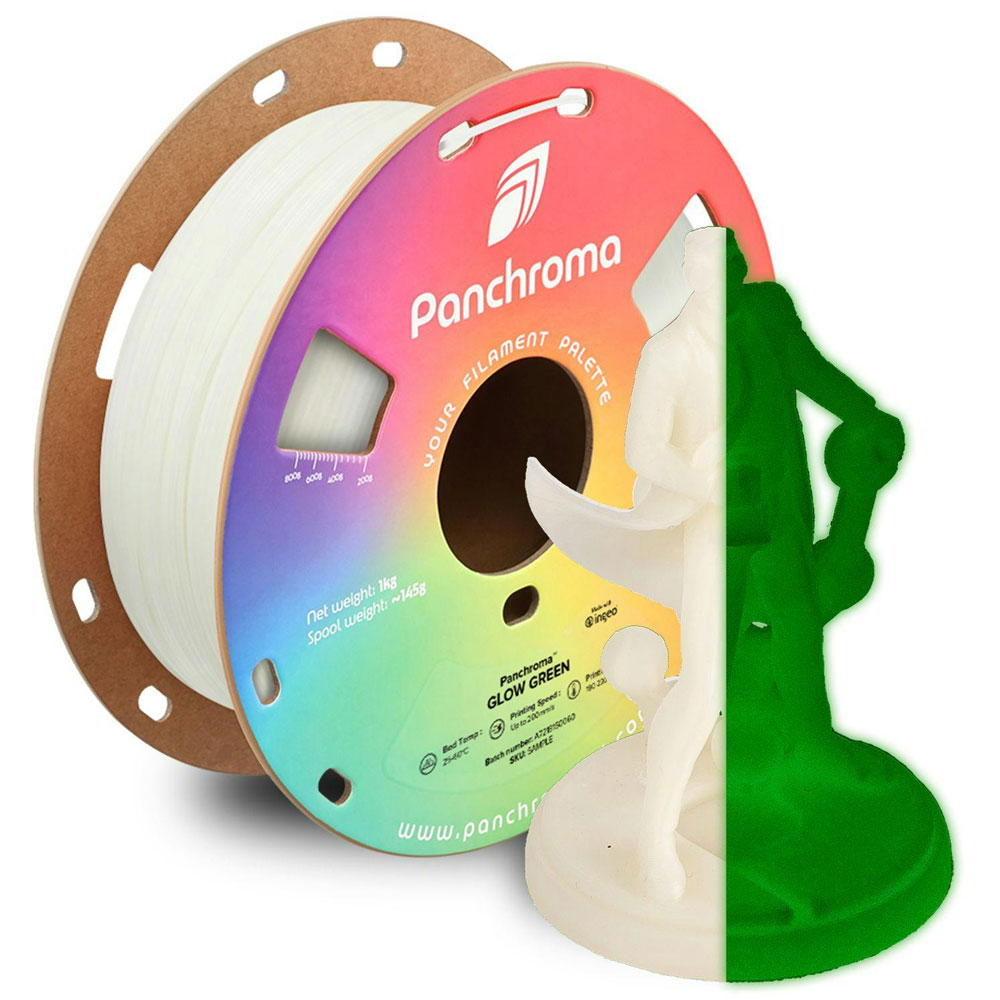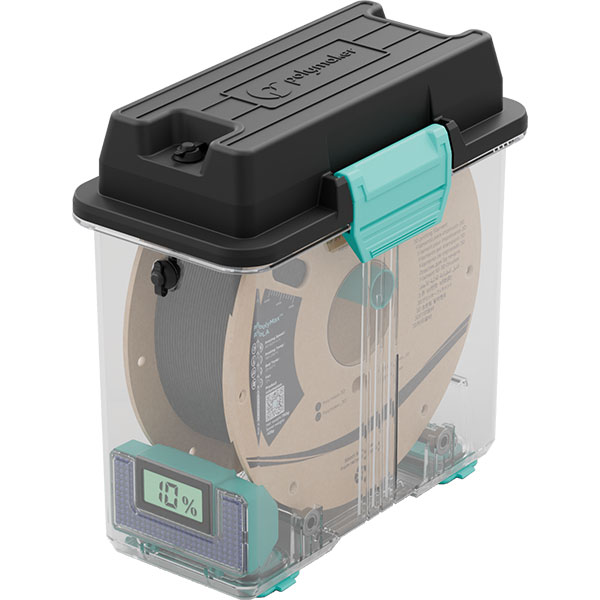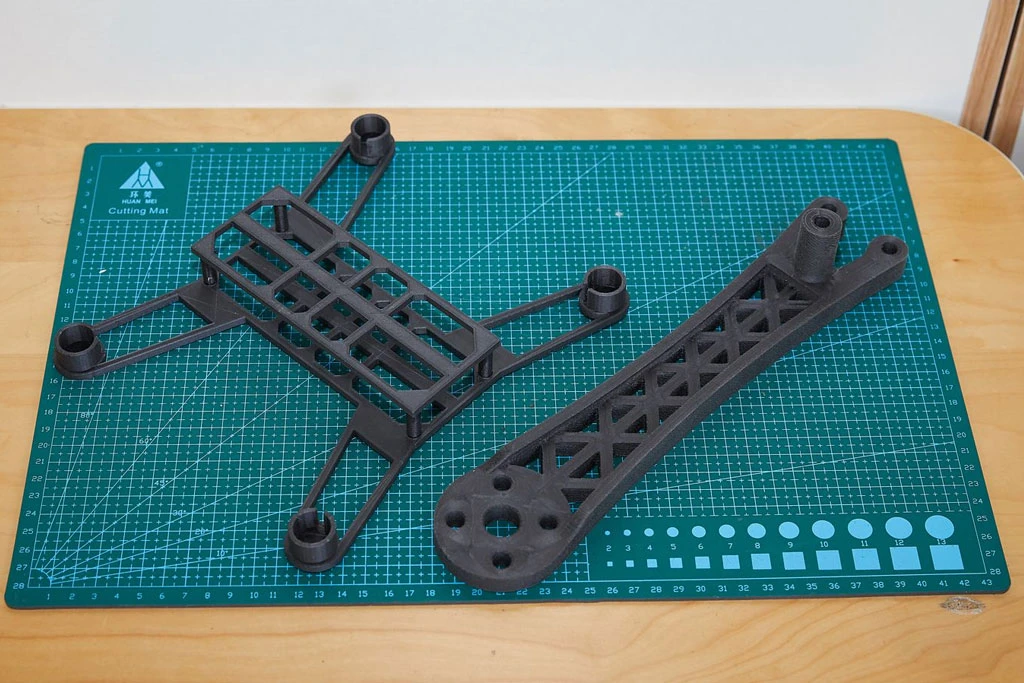5230+ reviews
Order by 16:00 for same day shipping
14 days return
DE
EN
Individual
Business
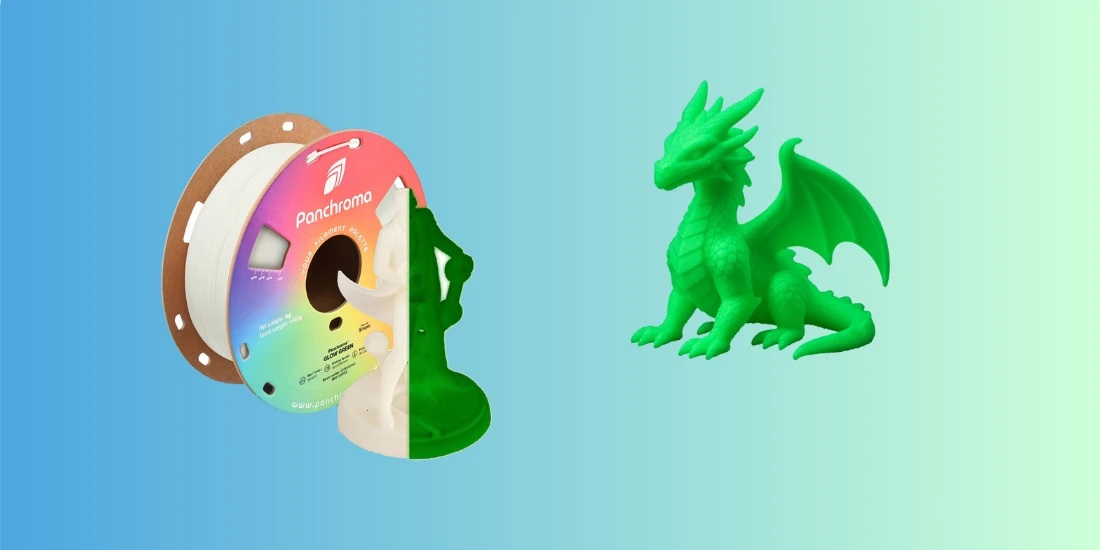
11/07/2025
Glow in the Dark Filament: Everything You Need to Know
Glow-in-the-Dark filament is a special 3D printer filament. It absorbs light and emits it in the dark. Phosphorescent materials, such as strontium aluminate, create this effect. These are added to a PLA or PETG base. This allows you to easily print objects that glow without batteries or electronics.
This filament is becoming increasingly popular with makers, hobbyists, and even the industrial sector. It stands out for its strong visual impact. It can also be used to create both functional and decorative prints. Think of keychains you can easily find in your bag. Or glow-in-the-dark stars for children's rooms. Safety markings for dark spaces are also useful applications.
Glow-in-the-dark filament is available in green, blue, and sometimes red. Green produces the brightest glow. This adds creativity, visibility, and safety to your prints. It's ideal for accessories, toys, decorations, or practical tools.
In the following chapters, you'll learn how this filament works. You'll get printing tips and discover ten popular applications. This way, you'll know exactly how to optimally use glow-in-the-dark filament for your next 3D project.

How does Glow in the Dark filament work?
Glow-in-the-Dark filament contains special powders that absorb light and emit it again in the dark. Manufacturers add these phosphorescent powders to base materials like PLA or PETG. The most commonly used powder is strontium aluminate. This material is safe and can store a lot of light energy.
How exactly does it work?
When you expose your print to sunlight or a strong lamp, the powder particles absorb light. They store these photons as energy. As soon as it gets dark, the particles gradually release the energy as visible light. This effect can last for several hours. How brightly and long your print glows depends on:
- The amount and quality of the glow powder in the filament.
- How long and intensely the filament is exposed.
- The color of the filament. Green gives the brightest and longest glow, while blue and red are less bright.
What should you pay attention to?
Glow powder is harder than standard PLA. It wears out brass nozzles faster. If you often print with glow-in-the-dark filament, use a hardened steel nozzle or a ruby nozzle. This will prevent premature wear.
During printing, Glow in the Dark filament behaves almost the same as PLA:
- Printing temperature: 200-220°C, depending on brand and printer.
- Bed temperature: 50-60°C, optional with PLA.
- Store the filament in a dry place and tightly sealed. Moisture absorption reduces print quality.
Glow-in-the-dark filament is ideal for creative and practical applications. Create a complete glow-in-the-dark print. Or combine it with other materials to create prints that light up without batteries or electronics. This gives your projects a striking and functional extra dimension.
Printing tips for Glow in the Dark filament
Glow-in-the-Dark filament prints similarly to standard PLA or PETG. However, there are important considerations for the best results and to protect your printer.
Preferably use a hardened nozzle. Glow-in-the-Dark filament contains phosphorescent particles, such as strontium aluminate. These particles are hard and abrasive. With prolonged use, brass nozzles wear out. This reduces print quality, requiring you to replace the nozzle sooner.
Do you often print with this filament? Then choose a hardened steel or ruby nozzle. Do you only occasionally print with glow-in-the-dark filament? Then you can continue using a brass nozzle. However, check it regularly for wear to prevent problems.
The printing temperature is often slightly higher than with standard PLA or PETG. This is due to the added glow particles. A temperature of 200-220°C is suitable for PLA glow filament. Set the bed temperature to 50-60°C. A heated bed isn't always necessary for PLA. This depends on your printer and the desired adhesion.
If you're using PETG glow filament, print at 230-250°C. Set the bed temperature to 70-80°C. Always check the manufacturer's recommended temperature and adjust your settings accordingly.
Print slower than usual for a smooth surface. This allows the glow particles to distribute more evenly. A print speed of 40-50 mm per second usually works best. This prevents irregular layers and enhances the luminous effect.
Glow-in-the-Dark filament is sensitive to moisture, just like standard PLA and PETG. Damp filament causes bubbles to form during printing. It also results in poorer layer adhesion and less attractive surfaces. The glow effect is weakened by moisture. Always store your filament in a dry place. For example, use a Polydryer box or a sealed bag with silica beads. If moisture is absorbed, you can use a filament dryer to dry the material again.
Charge your prints under a strong light source for the best glow effect. Sunlight works best, but a powerful lamp will also work. Charge your print for at least ten to fifteen minutes for a visible effect. The longer and more intensely you charge, the brighter and longer the glow will last.
Don't use a nozzle that's too small for coarse glow filaments. Some brands contain relatively large particles. These can get stuck in nozzles smaller than 0.4 mm. If in doubt, use a 0.6 mm or 0.8 mm nozzle. This will prevent clogging and keep your print running smoothly.
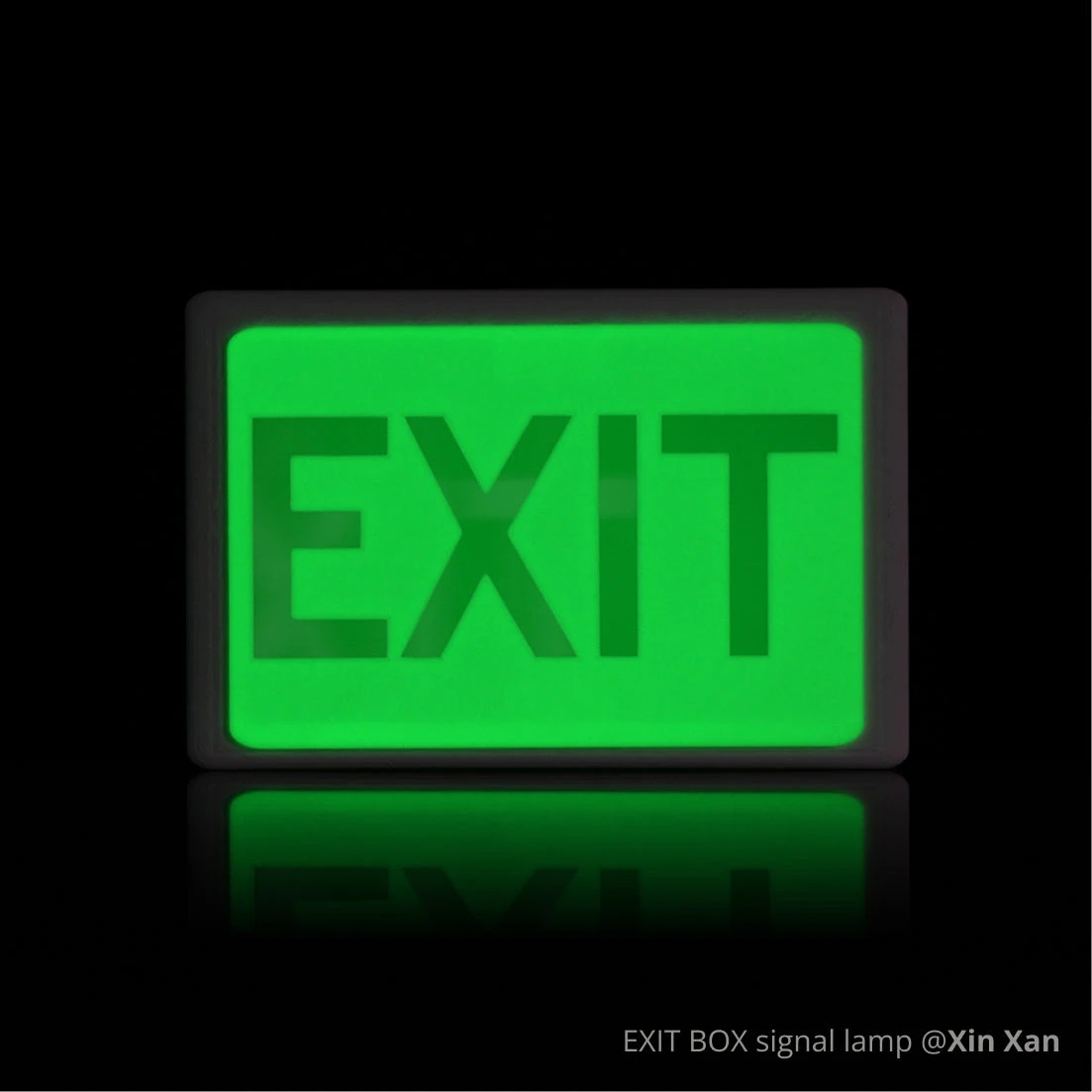
10 Popular Uses of Glow in the Dark Filament
Glow-in-the-dark filament opens up many creative and practical possibilities. Below are ten popular applications.
1. Keychains
Glow-in-the-dark keychains are practical and popular. They make it easy to find your keys in a dark bag or when you come home in the dark. Many designers opt for simple, round designs or keychains with engravings, making the most of the glow effect.
2. Night lights and lampshades
This filament is ideal for nightlights and lampshades. During the day, they charge under a lamp or in the sun. At night, they emit a soft, soothing glow. Perfect as an orientation light in the hallway, next to your bed, or in a child's room.
3. House number plates
With glow-in-the-dark filament, you can print house numbers that are always visible, even in dimly lit areas. Convenient for visitors and important for emergency services who need to find your house quickly in the dark.
4. Gaming accessories
Glow-in-the-dark gaming accessories are popular. Think dice, counters, and board game components. Dungeons & Dragons miniatures and Warhammer figurines also get a unique look with glow filament. They make game nights extra special.
5. Decorative figurines
Figurines of dragons, skulls, or popular characters like Pokémon are popular. During the day, they look like ordinary prints. In the dark, they transform into striking, luminous decorations. Perfect for your desk, cabinet, or gaming setup.
6. Safety applications
Glow filament is functional for safety. Print stair edge markings, emergency exit symbols, or arrows that glow in the dark. This allows you to see routes and obstacles more clearly and increases safety at home, at work, or in public spaces.
7. Bicycle accessories
Make glow-in-the-dark valve caps, reflective clips, or other bicycle accessories. They'll make you more visible in the dark, alongside standard lights and reflectors. This way, you'll ride more safely, especially in winter or bad weather.
8. Phone holders and gadget docks
Glow-in-the-dark phone holders and smartwatch docks are handy for bedside tables and desks. You can find them easily in the dark without turning on the light. This is ideal if you grab your phone at night.
9. Key Caps and Tool Markings
Provide keys and tools with glow-in-the-dark caps or markers. This way, you can always quickly find the right item in a dark shed, basement, or garage. It prevents frustration and saves time during DIY projects.
10. Children's room decorations
Glow-in-the-dark stars and moons are a classic. Stick them on walls and ceilings for a magical effect. Name letters for cabinets or doors are also popular. They create a sense of calm, ambiance, and a playful touch in children's rooms.
Glow-in-the-dark filament combines creativity with functionality. Add safety, visibility, and magic to your 3D projects with these applications.
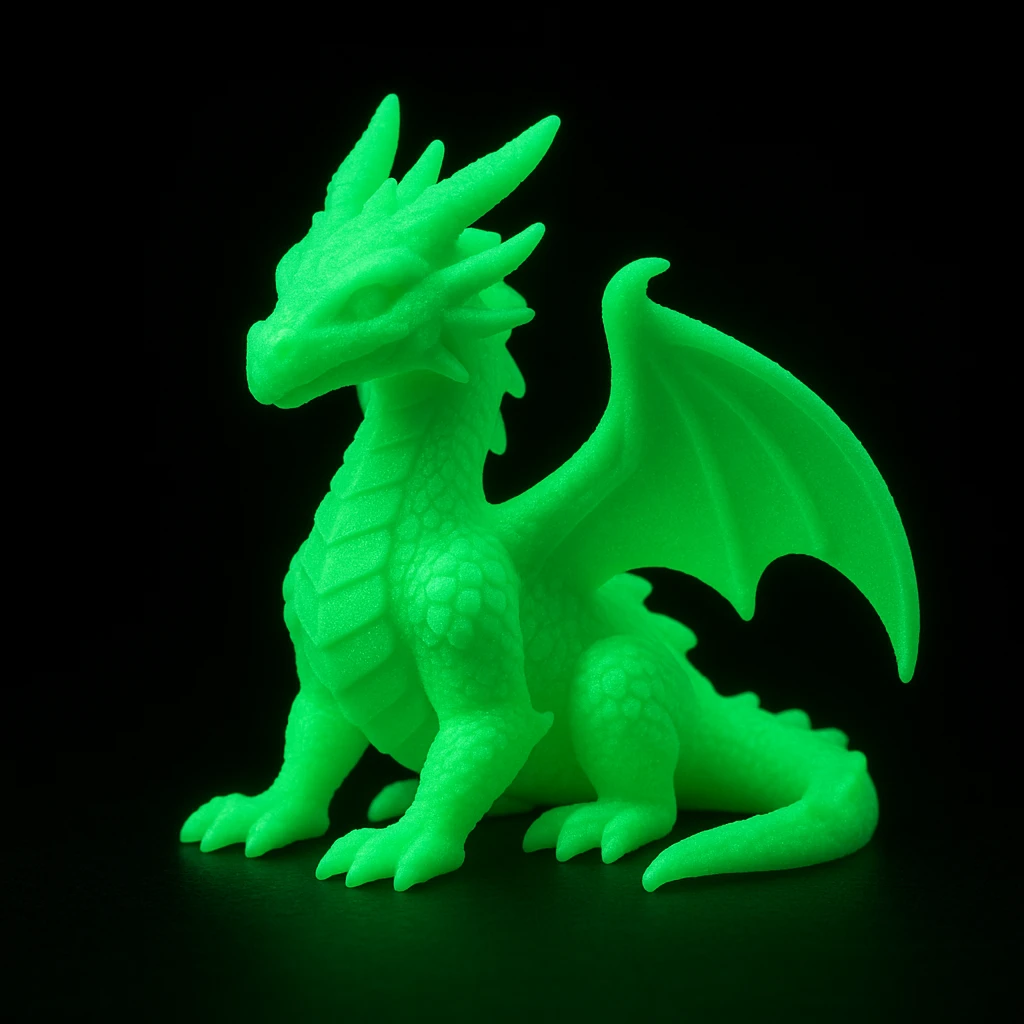
Advantages and disadvantages of glow in the dark filament
Glow-in-the-dark filament offers many unique possibilities for your 3D printing projects. Its biggest advantage is its striking visual effect. During the day, prints appear normal. In the dark, they glow naturally. This makes the filament perfect for decoration, gadgets, safety markings, and creative applications.
Most glow filaments are based on PLA or PETG. This makes them easy to print with standard settings. They work on virtually any FDM printer. Another advantage is the use of strontium aluminate. This material is non-toxic and safe for use in the home. Think of children's room decorations or keychains that you can easily find in your bag. The effect is versatile. You can also highlight stair edges or make components visible in dark rooms.
However, glow-in-the-dark filament also has drawbacks. The phosphorescent powders make the filament abrasive. A brass nozzle will wear out faster, especially with heavy use. Therefore, use a hardened steel nozzle to minimize wear. Furthermore, glow filament is often more brittle than standard PLA or PETG. It's less flexible and less suitable for components that need to withstand significant force.
The price is also higher than standard filaments. This is due to the additional production costs of the glow powder. Cheaper versions often contain fewer glow particles. As a result, prints glow less brightly and the effect fades more quickly. Some filaments contain coarse particles. Small nozzles therefore clog more quickly. Use at least a 0.4 mm nozzle. If in doubt, choose a 0.6 or 0.8 mm nozzle.
Despite these drawbacks, the creative applications and unique effect often far outweigh the concerns.
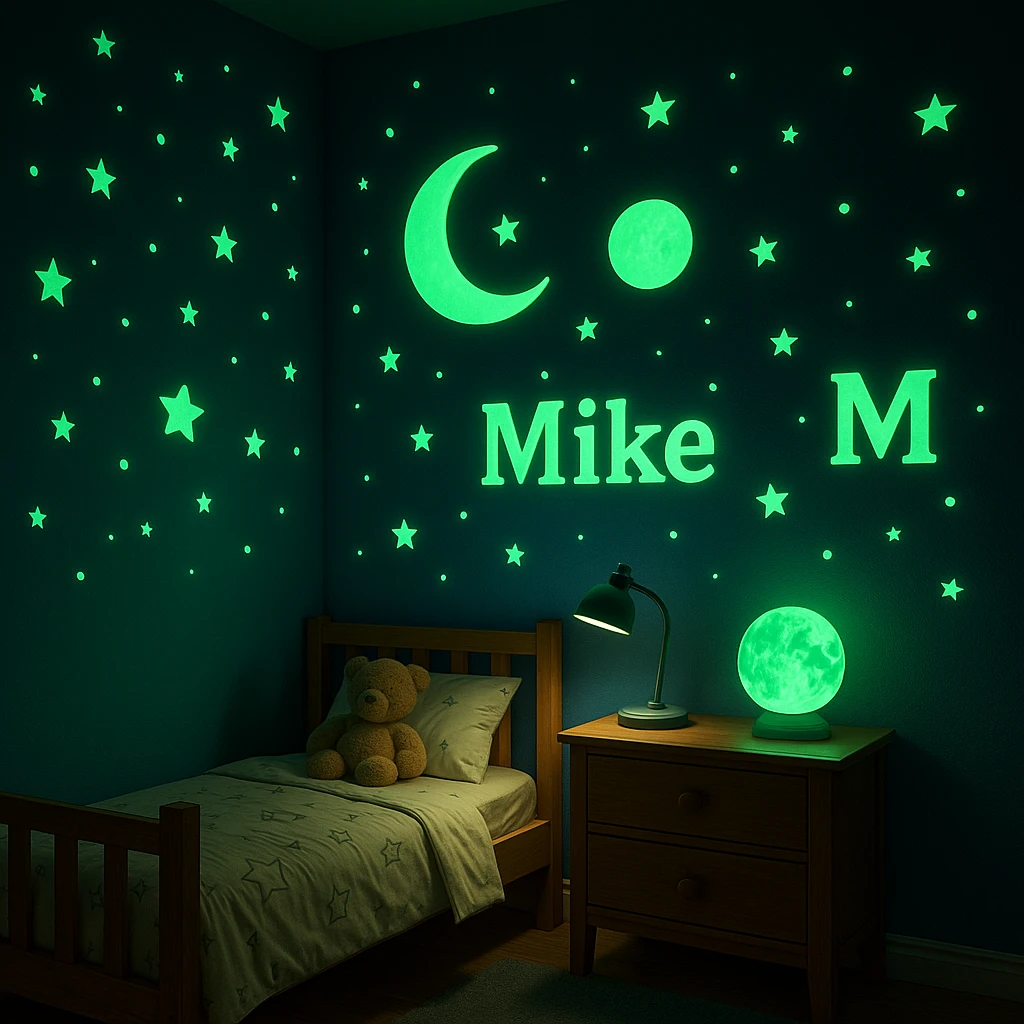
Conclusion
Glow-in-the-Dark filament is a unique and versatile material. It gives your 3D prints a striking and creative effect. Thanks to phosphorescent particles, prints glow in the dark, without electronics. This makes the filament ideal for decorations such as figurines, keychains, stars, and letters in children's rooms. Functional applications also benefit, such as stair markings, house numbers, and safety labels that remain clearly visible at night.
Glow filament prints largely the same as PLA or PETG. However, there are some considerations. The hard glow particles are abrasive and wear out brass nozzles faster. Therefore, a hardened steel nozzle or ruby nozzle is often a better choice, especially for frequent use. Glow filament is also slightly more brittle than standard PLA or PETG. Furthermore, the price is higher due to the cost of the glow powder. The intensity of the glow varies by brand and composition. Cheaper filaments often contain less glow powder and produce a weaker effect.
With the right nozzle, the right settings, and a little creativity, you can get the most out of this filament. Whether you want to find keys, illuminate your interior, or create safety markings, glow-in-the-dark filament offers endless possibilities. Let your designs literally and figuratively shine in the dark.
